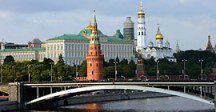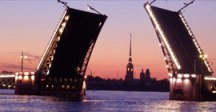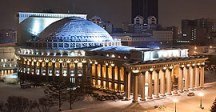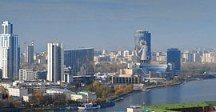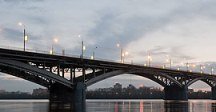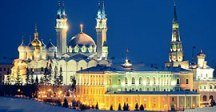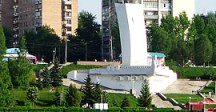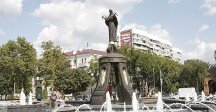Map of Saint Petersburg
Detailed interactive map of Saint Petersburg. Map of Saint Petersburg with streets and numbers of houses. Satellite map of Saint Petersburg with sights of the city.
The change between the satellite map of Saint Petersburg and the schematic one is made in the lower left corner of the interactive map.
Saint Petersburg
Population of St. Petersburg: 5,384,342 people (2021)
Date of foundation of St. Petersburg: May 27, 1703
St. Petersburg phone code: +7 812
Car codes of St. Petersburg: 78, 98, 178, 198
Postal codes of St. Petersburg: 190000-199406
The airport of St. Petersburg: Pulkovo (LED)
The federal city of Saint Petersburg is a subject of the Russian Federation, including the city of Saint Petersburg and its suburbs. Along with being called the Northern Capital of Russia, this city is also often called the Venice of the North because of its canals and bridges, and it is an extremely popular destination for tourists.
Peter the Great founded this city on the Baltic Sea, building a fortress and draining the swamps. The new city marked a new era in Russian history and became the capital of the empire later created by Peter the Great.
The imperial residence was moved from the Moscow Kremlin to the Winter Palace of St. Petersburg, and Peter forced other nobles to do the same. Peter's successors contributed to the design of the city and hired leading architects to decorate the city and give it a unique look.
Despite the fact that the city is only a little over 300 years old, it has a rich history, as it served as the capital of the Russian Empire. It was here that the Russian Revolution broke out in 1917, when the city was known as Petrograd.
Like Leningrad, the city suffered unimaginable hardships during the blockade at the hands of the Nazis during World War II. In its history, the city was known as St. Petersburg, Petrograd and Leningrad, and each incarnation reflects different periods of Russian history. The city was awarded the title of Hero City of the Soviet Union.
As the cultural capital of Russia, St. Petersburg is home to many museum houses of famous Russian artists, composers and poets, not to mention the Mariinsky Theatre and the State Hermitage Museum. In addition to the palaces located in the city itself, there are additional summer residences located in the neighboring cities of Peterhof, Pushkin (Tsarskoye Selo), Pavlovsk, Lomonosov (Oranienbaum) and Gatchina.
Holidays in St. Petersburg
Popular tourist destinations include the former Romanov palaces: the Winter Palace in St. Petersburg - now the world-famous Hermitage Art Gallery, Catherine Palace in Pushkin (former Tsarskoye Selo), Tsar Paul's Palace in Pavlovsk and the Grand Palace in Peterhof with a magnificent cascade of fountains. All this is protected as a UNESCO World Heritage Site in the Historical Center of St. Petersburg.
The best time to visit St. Petersburg is during the summer period, known as White Nights, when the sun barely sets over the city. St. Petersburg has very good transport links.
Bridges are a symbol of the city, especially drawbridges. The Alexander Nevsky Bridge is the longest of them, because its length is 1 km. In terms of valuable historical monuments, St. Petersburg surpasses almost all other cities in Russia.
The sights of St. Petersburg include the Baroque Winter Palace of the 18th century, the Peter and Paul Fortress – the oldest building in the city, St. Isaac's Cathedral of the 18th century. The main temple is the Church of the Savior on Spilled Blood, etc. There are also monuments in the vicinity of the city, but mostly natural.
What to see in St. Petersburg
St. Petersburg is the most touristic city in Russia with more than 200 museums and about 6,000 monuments! The main street of St. Petersburg is Nevsky Prospekt, so named because it begins near the Neva River at the Winter Palace and stretches southeast to the Alexander Nevsky Lavra. Nevsky Prospekt also has several monuments, palaces, churches and many restaurants, bars and cafes.
Nevsky Prospekt
Nevsky Prospekt crosses several famous canals of St. Petersburg. Of the bridges, the most famous is the Anichev Bridge, which is decorated with four iconic statues known as "Horse Tamers", which depict young people trying to calm wild horses. The canals themselves are a tourist attraction, and you can get a closer look at them by going for a boat ride around them, which will allow you to see St. Petersburg from a different angle.
Hermitage (Winter Palace)
The most popular tourist destination in St. Petersburg is the Winter Palace, which now houses the State Hermitage Museum. The palace stands on the banks of the Neva River on Palace Square and served as the official residence of Russian emperors and empresses from 1732 to 1917. The preserved version of the palace is its fourth incarnation and was built between 1754 and 1762 by order of Empress Elizabeth, although it has been supplemented and reconstructed many times since then.
Today, the palace houses the State Hermitage Museum, which is one of the most famous art galleries in the world. Many of the 1,500 halls of the palace are filled with sculptures and paintings by world-famous artists of all ages, although quite often the interior of the palace even overshadows these masterpieces.
Other parts of the palace have been preserved as they looked when they were used as an imperial residence, which clearly demonstrates the enormous luxury with which the Romanovs surrounded themselves.
The Mariinsky Theatre
While Moscow has a Bolshoi Theatre, St. Petersburg has the Mariinsky Theatre. It was opened in 1860 and saw the premieres of works by Tchaikovsky, Mussorgsky and Rimsky-Korsakov. The theater is named after Empress Maria Alexandrovna, wife of Emperor Alexander II, and this imperial connection led to it being renamed after the revolution. For most of the Soviet era, it was known as the Kirov Theatre.
Cathedrals of St. Petersburg
There are three main cathedrals in St. Petersburg, which are located on or around Nevsky Prospekt. If you walk along the avenue, the first thing you will see will be the amazing Cathedral of the Resurrection of Christ, which is better known as the Church of the Savior on Spilled Blood, since it stands on the spot where Emperor Alexander II was assassinated. It was built between 1883 and 1907 and resembles St. Basil's Cathedral in Moscow.
Next to the Savior on Spilled Blood is the Cathedral of Our Lady of Kazan, built between 1801 and 1811 in the Empire style, with a large semicircular colonnade. Since 2000, the cathedral has served as the diocesan cathedral of the St. Petersburg Diocese, so admission is free. Inside you can see the grave of the hero of the Napoleonic War Mikhail Kutuzov and the most revered preserved copy of the icon of the Kazan Mother of God.
St. Isaac's Cathedral is located near the end of Nevsky Prospekt, opposite the Alexander Garden. It is the largest cathedral in the city, and its construction took more than 40 years, from 1818 to 1858. It is dedicated to Saint Isaac of Dalmatia, on whose feast day Peter the Great was born. The cathedral is open to tourists as a museum, but services are also held here. Visiting the cathedral allows you to climb the dome to enjoy the magnificent view of St. Petersburg.
The Bronze Horseman
The most famous monument in St. Petersburg and one of its most recognizable symbols is the equestrian statue of Peter the Great, which is known as the Bronze Horseman, despite the fact that it is made of bronze.
The statue was immortalized in Pushkin's famous poem of the same name, from where the mixing of bronze and copper began - copper had the best sound. The statue was unveiled in 1782 by order of Catherine the Great. Peter stands on a massive 1,250-ton boulder known as the Thunderstone, which was hardly transported to St. Petersburg on purpose.
The Russian Museum
Undoubtedly, the Hermitage is the best and most famous gallery in St. Petersburg, but most of its appeal is actually due to the luxurious interiors of the palace, and not just the works of art on display here. Russian Russian Museum is the gallery for you, however, if you have a passion for Russian art, since it was originally created as a separate department of the Hermitage dedicated exclusively to Russian works.
The Mikhailovsky Palace, modest in comparison with the Winter Palace, exhibits some of the best and most famous examples of Russian fine art, including original paintings by Ivan Aivazovsky, Boris Kustodiev, Ilya Repin, Nikolai Roerich, Vasily Surikov, Viktor Vasnetsov and many others.
Cabinet of curiosities
Vasilievsky Island is home to one of the first museums created in St. Petersburg, the Kunstkammer. It was created in 1727 as a cabinet of curiosities, including a collection of deformed human and animal embryos, which was acquired by Peter the Great in the Netherlands and later supplemented with samples collected from all over the Russian Empire.
Today, the museum is operated as the Peter the Great Museum of Anthropology and Ethnography of the Russian Academy of Sciences. The museum features many interesting exhibits of local clothing and traditions of various tribes from around the world, undoubtedly the main attraction is still the collection in formaldehyde.
Peter and Paul Fortress
Peter and Paul Fortress is the very heart of St. Petersburg, where the first fortress was founded when Peter the Great was building his new northern capital in 1703. The fortress was nicknamed the Russian Bastille, as many high-ranking dissidents were imprisoned here during the tsarist regime.
Today, the Peter and Paul Fortress operates as a museum, and its most interesting attraction is the Cathedral of Peter and Paul in the classical style, where almost all Russian emperors and empresses are buried.
Peter the Great and Catherine the Great are buried here, and the remains of the last Emperor Nicholas II and his family were reburied here. In fact, the only Russian emperors who were not found here are Ivan VI (whose remains are located somewhere in the vicinity of Shlisselburg) and Peter II (who is buried in the Moscow Kremlin).
Smolny Convent
There are several monasteries and monasteries in St. Petersburg, but the most famous is probably the majestic Smolny Monastery, although in fact it no longer functions as a convent. The monastery was founded in 1744 by order of Empress Elizabeth and, like many buildings associated with Elizabeth, was designed by Bartolomeo Rastrelli in the style that became known as Elizabethan Baroque.
The main cathedral here is the Cathedral of the Resurrection of Christ, but it is better known as Smolny Cathedral. There are several churches and other buildings built in the same style around it. Today it is used as a concert hall, and you can climb its towers to admire the magnificent view of St. Petersburg.
Grand Layout Russia
A new interesting attraction in St. Petersburg is the Grand Maket Russia, which is a toy railway with an area of 800 square meters, representing the vast territory of Russia and its various regions.
Here, in just one room, you can see what Russia has to offer from Moscow, St. Petersburg, Sochi, the Urals, the Far North and the Far East, which would take a lifetime to see in real life!
Moving trains are just one of the features of the set, you can spend hours looking at models of monuments and houses, complemented by everyday scenes depicted by tiny figures of people. There is also a night simulator in which the main lights go out and tiny lights come on in a miniature world.
Piskarevskoye military cemetery
One of the places in St. Petersburg is the Piskarevskoye military cemetery, where about half a million people are buried - either soldiers who died on the Leningrad front, or citizens who died during the siege of Leningrad. In the center is a bronze monument to Mother Russia with a wreath in her hands. The cemetery is a fitting tribute to this tragic period of suffering in Russian history and a must for anyone interested in Russian military history.
Suburbs of St. Petersburg
There are several suburbs in St. Petersburg that are also popular tourist destinations. The four most famous of them boast luxurious palaces that were once the summer residences of the imperial family.
There is a Large Peterhof Palace in Peterhof, built by order of Peter the Great, with dozens of fountains. In Pushkin (former Tsarskoye Selo) there is the Catherine Palace, which was originally built for Empress Catherine I, but expanded for Empress Elizabeth. It is famous for its Amber Rooms, which were completely restored after disappearing without a trace during the Nazi occupation.
Next to Pushkin is Pavlovsk and the Pavlovsk Palace, which is closely connected with Emperor Paul. Lomonosov is home to the Oranienbaum Palace complex, which was the only one of the palaces that survived the Nazi invasion. Another suburb is Kronstadt, which is closely linked to the Russian Navy.
Krondstadt
As soon as Peter the Great captured Kotin Island in the Gulf of Finland from the Swedes in 1703, he built fortifications here to protect the construction of his new capital, St. Petersburg.
The following year, the city of Kronstadt was founded on the island, which became the home of the Baltic Fleet, which it remains to this day, and most of the city's attractions are naturally associated with its naval history, including its important revolutionary role and the Kronstadt Uprising of 1921.
The naval glory of Kronstadt also led to the city being named the City of Military Glory. In addition, some of its historical fortifications are under UNESCO protection.
Lomonosov
Lomonosov is named after the great Russian scientist Mikhail Lomonosov, and the imperial palace complex Oranienbaum is located here. Previously, the city was named after the palace itself, and although today it retains its Soviet-era name, tourist guides and excursions often call it Oranienbaum, which means "orange tree" in German.
Like other satellite cities of St. Petersburg, Lomonosov is a popular tourist destination due to its palace complex, which is the only one that was not badly damaged during the war, since Lomonosov was not captured by the Nazis and remained a Soviet bridgehead during the siege of Leningrad. Today, the palace and the historical center of Lomonosov are UNESCO World Heritage Sites.
Pavlovsk
The city of Pavlovsk is closely connected with Emperor Paul. The land on which Pavlovsk now stands was allocated to Pavel by his mother Catherine the Great at the birth of his first son, the future Emperor Alexander I. Subsequently, the Pavlovsky Palace was put into operation along with a landscape park, and after the murder of Pavel, it remained the home of his widow, the Dowager Empress Maria Feodorovna, who turned it into a kind of center of Russian culture. Today, the palace is a UNESCO-protected museum and is the main attraction of the city.
Peterhof
Having founded his new capital, St. Petersburg, Peter the Great began to create a summer residence outside the city. This led to the foundation of Peterhof, which translates from German as Petrovsky Yard. Peter the Great wanted to create a palace complex here that could rival Versailles.
It is impossible not to admire the results, especially the numerous fountains in the park, for which the estate is most famous. The palace complex and the historical center of the city are under UNESCO protection.
Pushkin
Not far from St. Petersburg is the city of Pushkin, named after Russia's favorite poet, who studied in this city as a child. However, at that time the city was known as Tsarskoye Selo, and today it is often called by its old name, especially in tourist guides and excursions.
Tsarskoye Selo was home to the summer residence of the tsars in the Catherine Palace or Alexander Palace. During World War II, the city was occupied by the Nazis, the palaces were looted; the famous Amber Room in the Catherine Palace was looted, but never found.
Today, the Catherine Palace has been completely restored, and work continues on the Alexander Palace. Both the palaces and the historical center are under UNESCO protection. In addition to the palaces, Pushkin is also famous for the lyceum where his namesake studied.
Sights of St. Petersburg
Winter Palace, Peterhof, Palace Bridge, Savior on Spilled Blood, Great Catherine Palace, St. Isaac's Cathedral, Peter and Paul Fortress, Kazan Cathedral, Kunstkamera, Botanical Garden, BIN RAS, Hermitage, Yusupov Palace, Alexander Garden, Marble Palace, Arrow of Vasilyevsky Island, Narva Triumphal Gate, Alexander Column, Mariinsky Theater, Summer Palace Elizabeth Petrovna, Alexander Nevsky Lavra, Smolny Cathedral, Leningrad Zoo, Faberge Museum in St. Petersburg, Nevsky Prospekt, Palace Square, the Bronze Horseman.
The largest cities in Russia:
2024 © Russia-Karta.ru
